Getting your snowmobile’s track adjusted correctly doesn’t have to be complicated. In this guide, we’ll show you the tools, step-by-step instructions, and troubleshooting tips for all major brands — Polaris, Ski‑Doo/Lynx, Arctic Cat, Yamaha, and more. If you do it right, your snowmobile will run great quickly. Why Track Tension Matters Track tension directly affects […]

6 Different Types of Motorcycle Helmets You Should Know
If you're just starting riding a motorcycle, the bevy of helmet options can be intimidating to pick from-- specifically since you're counting on your option to conserve your life. It's very easy to pick a helmet that looks great, however, you currently know that you require a great deal much more from your helmet.
Nowadays, you can discover several various motorcycle helmet types on the market. While they all have the very same objective, some safeguard you more than others.
Choosing the best is entirely up to you, but you have to understand all about them in order to make the very best selection.
When you know the different types of motorcycle helmets, it will be very easy to find the one that suits you.
Now, let us understand the most common helmet types on the market.
Table of Contents
Full face helmets
For roadway as well as highway riding, full-face helmets are generally agreed to be the safest option. They provide complete protection for all areas of the face and head, including a chin bar and also a repaired visor.
Many models are rather versatile as well as appropriate for all sorts of motorcycles, roads, and ranges. They just differ depending upon the riding you do. This is why you'll find some full faces that are better for you than others.
Sport cyclists are usually stooped over, which requires complementary ergonomics from a helmet.
On sportier helmets, the chin bar will certainly be greater, as well as the eye-port needs to be angled a little in the direction of the top of the helmet.
Also, airflow ducts will be positioned near the top of the head to attract the most air in a put setting.
Flashy full faces are likewise unsafe against the wind as well as have special rules of aerodynamics to stop helmets
lifting at broadband.
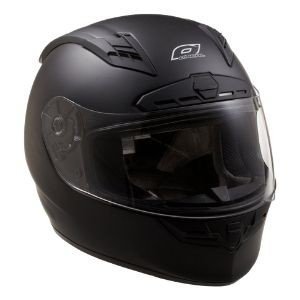
Full face motorcycle helmet
For those with an extra upright setting-- tourers, cruisers, or ADV cyclists-- a full-face helmet needs to have a slightly various form.
The chin bar will certainly prolong a little lower, the eye-port will be tilted right out, and also there will be more frontal duct. These touring, as well as informal helmets likewise, focus on convenience as well as soundproofing.
In some cases, they feature add-ons that would certainly make a techie wet himself: Mp3, Bluetooth communication systems, and so on.
The issue with full faces is airflow. If you have the visor closed-- and also anyone that has actually taken a wasp to the eye at 100 km/h will certainly have the visor closed-- the helmet is essentially a secured bubble.
So, you must look for something that is well aerated to avoid your hair from spontaneously igniting. Moisture-wicking, removable, and also machine-washable cushioning is also a plus due to the fact that no person likes to put their head in a smelly pail.
With full-face helmets, there's also the whole visor issue to take into consideration.
Depending upon how much sunlight you see, the UV defense rating could be essential.
You must also pay attention to lens shades-- they're far more than simply looking great!
If you ride primarily in really intense conditions, a mirrored or dark-colored lens will secure you from the glow.
And if you live under continuous cloud cover-- like some West and East coasters-- a rose or yellow-colored lens will certainly assist boost meaning.
Clear lenses are excellent for any individual who does a bit of evening riding, while jet-black lenses should be made use of with caution.
Believe me, a power outage visor is just awesome up until you go into a slightly dark passage and smash into the wall.
Another visor concern involves fogging. And think it or not, there are extra aspects at play than just your perspiring head. Anti-fogging lenses are an excellent-- however not foolproof-- solution.
To better lessen fogging, locate a helmet with a built-in breath box. This guides your exhalations away from the visor.
Modular or Flip-up
Modular or otherwise referred to as flip-up designs are a combination of 3/4 and full-face helmets. Their name originates from the style that permits the chin bar and visor to flip up.
At first glance, they look similar to full-face ones and also feature the exact same products. These fit practically the same way as well as are entirely enclosed once the flip-up component is reduced.
Most designs include a standard visor that does an exceptional job in securing your eyes. Some may consist of another visor that provides better defense against sunshine.
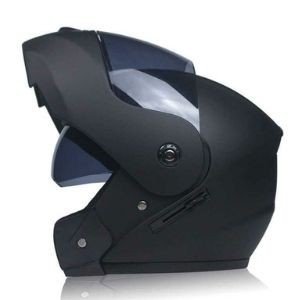
Flip-up motoycycle helmet
Flip-up motorcycle helmet
You should remember that these tend to consider a bit much more. It's the additional joint that remains in the flip-up that contributes to the total weight. This hinge additionally affects overall safety and security because of its powerlessness throughout the influence.
It's an ideal design for you if you're an experienced rider or a cruiser. It has vast eye openings, and the chin bar is reduced on the face. This is superb for an upright riding placement.
A great ventilation system is equally as important to keep the air streaming once the flip-up component is decreased and covering your face. Without air vents, its visors would fog, and also the within would become fairly cozy.
Open-face or 3/4
As veteran favorites of lower-speed cyclists and also scooter motorcyclists, Open Face Helmets cover the sides, leading, as well as the rear of the head while leaving face locations totally subjected to the fresh breeze. Since there's no structural chin section, open face helmets use much less accident defense. A flexible strap around the chin keeps them safely attached to your head.
Those locations that they do cover are highly secured. As a matter of fact, they're designed to be structurally equal to full-face models, so they do an exceptional task of securing your head.
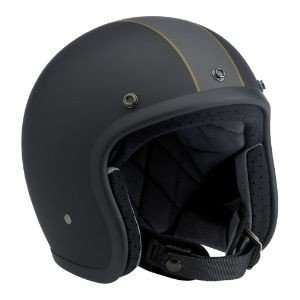
Open-face motorcycle helmet
Half Helmet
A half helmet has neither a chin bar nor a visor-- just a dome-shaped top piece to cover your skull. Unsurprisingly, these provide the least protection of any type of kind of motorcycle helmet, as well as they're the bare minimum required in the majority of states that have regulations calling for motorbike helmets. Their benefit is, certainly, vastly boosted airflow (perhaps way too much if you're doing freeway riding).
Protective eyewear is a need if you select to shake a fifty percent helmet. UV-polarized riding safety glasses with a backstrap are a favored alternative, but anything is better than nothing. Motorcyclists that pick half helmets also typically wear neck and also face guards to maintain pests as well as dirt from flying right into their mouths.
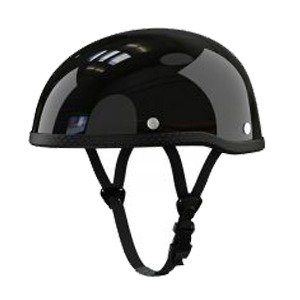
Half-Helmet
Off-road/Dirt Bike/Motocross
Since off-road riding on a motorcycle needs even more physical exertion, dirt bike helmets are lightweight as well as developed for maximum airflow so the cyclist can breathe easily-- particularly throughout the warmer months of off-roading. Adding to the requirement to remain awesome, dirt bike helmets also feature less insulation inside. One-piece building provides premium levels of defense around the chin area.
Because motorcycle helmets aren't planned for high speeds and also do not consist of a wind visor, riders usually wear separate safety glasses inside the helmet for eye protection. This is actually favorable due to the fact that safety glasses are a lot easier to eliminate and clean up when every little thing gets mud-covered.
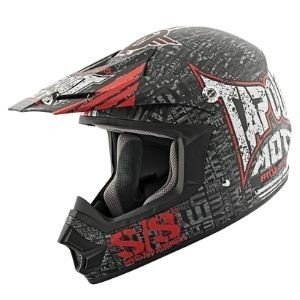
Dirt Bike motorcycle heimet
Off-road helmets feature large, adjustable "sun peaks" add-ons that offer numerous features. Initially, they maintain sunlight glow out of the eyes-- something that's more of an element when you're riding up and down hills at extreme angles while off-roading.
Second of all, if you're behind an additional rider or motorcyclist on a dirt path, the sun peaks successfully block a great deal of dust and mud kicked up by their rear wheels. This arc of mud spraying into the air behind a dirt bike is known as a "fowl tail" as a result of its visual shape. Consequentially, being "roosted" by one more motorcyclist is no enjoyable, and also can be rather uncomfortable when rocks are thrown.
As a result of lighter weight and also reduced insulation, you'll listen to the most sound inside a dirt bike helmet. Nonetheless, this is valuable at lower speeds over harsh terrain when such noises are required to establish if tires are sliding, skidding, or keeping call.
Keep in mind that degrees of wind, as well as noise inside a dirt bike helmet, can get extremely undesirable during high-speed riding. Sunlight peaks would likewise catch dangerous degrees of wind-resistant force - continually pushing your direct and back. For these reasons, dirt bike-style helmets are made to be utilized at reduced speeds.
Those that plan to do off-road racing or just extreme things may appreciate motorcycle helmets made of lighter-weight compounds.
In motocross competitions, helmets ensure the safety of competitors
Dual-sport Crossover, ADV, Enduro, Crossbreed
Dual-sport helmets are thought-about a mix of off-road as well as full-face models. Initially look, their outside looks comparable to an off-road version since these also have huge visors and also lower chin bars. Still, their indoor appears like full-face versions since they're well-padded as well as comfy.
They're developed to bring the most effective of both worlds, so you can utilize them on and off the road.
This kind comes with a visor that's frequently larger than the one on a full facepiece. It can also be lifted right into an upsetting that makes it less complicated to wear safety glasses.
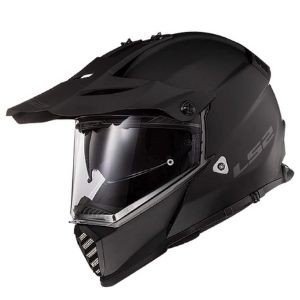
Dual-sport helmet
Visors are aerodynamic which means that they do not raise in the wind. You can reduce it when you get on the street, and afterward increase it and utilize goggles for better ventilation.
Their airflow system isn't as wonderful, yet they're rather soundproof which indicates reduced road noise.
Fundamentally, they are doing very well in both aspects, however, they additionally bring some problems from each kind. Anybody can use them in and out of the city area as they're fairly basic and also simple to place on as well as remove.
Some little things you should know about motorcycle helmets
There are some little things you should know about motorcycle helmets.
What Are Helmets Made from?
Manufacturing has established a whole lot, so there's a wide range of materials made use of. Modern helmets are really various from the initial versions regarding weight, safety, and security, and looks.
The most common product is plastic, however, others like fiberglass, Kevlar, and carbon fiber are additionally readily available. Still, when we state plastic, it's critical to discuss that it's not any average plastic. It's specially crafted to fulfill the safety requirements.
These are one of the most popular due to the fact that they're one of the most lightweight and also present an excellent balance between durability and weight.
Below the plastic covering is the thick extra padding foam. With these helmets, the foam padding isn't of the very best high quality as well as typically collisions throughout an effect.
Fiberglass, on the other hand, has great flexibility. These take in a good deal of effect and also can hold up against extra stress and force than plastic ones. It's additionally a light-weight material, but as we stated, it's more long-lasting as well as flexible than any other used in road helmets.
When it involves high-performance auto racing models, you'll discover some tougher and very solid materials. For the most part, these function Kevlar and carbon fiber in their outer covering.
These are great in taking in the high effect that would probably break routine helmet right into pieces. Because of this, Kevlar and carbon fiber versions are for those who desire the best safety.
When picking a product, you should first consider the riding you do in addition to the roadway you get on. Discovering the best one of these couple of materials depends upon you and also your personal needs as well as choices.
The basic structure of the helmet
Outer Shell.
The outer covering is the outside part of the helmet you see from the outside. It's normally made of carbon fiber, Kevlar, polycarbonate, or molded plastics. It can additionally be a combination of those. Its feature is to secure the head in the event of abrasion or effect.
It should avoid infiltration from rocks, insects, and also various other outdoor things. It comes in all sorts of colors, tones, and style patterns.
Face Shield/Visor.
This is a safety and security function that assists maintain all the dirt, debris, and also insects far from your eyes as well as face. These are generally detachable so you can clean up or replace them much easier.
Some helmets feature clear visors only that's best for low-light degrees. Others include a few colored designs as well. Various colors are readily available and appropriate for various climate conditions and also riding atmospheres.
While you ought to possess a clear visor as it's the one you'll possibly utilize one of the most, a couple of tinted variations could also come in helpful generally.
The structure of the helmet
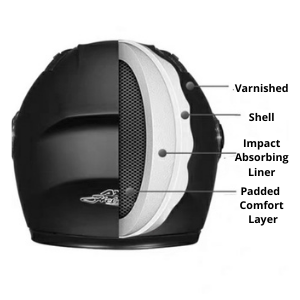
The structure of the helmet
Influence Absorbing Liner.
The inside of the outer covering typically includes the EPS influence absorbing liner. Its objective is to take in shock as well as displace power in case of a mishap.
Simply put, the outer covering safeguards your head from foreign things, and the lining stops that power to transfer to your head. The far better the lining, the much less of those foreign items you'll feel landing on your head.
Linings can be different, as well as everything depends upon the type and the particular brand. Some include a solitary layer of dense foam while others have a dual-density layer for much better energy displacement.
Padded Convenience Layer.
The lining is a safety and security feature, but the padded layer is there for convenience. It's the location that supports your head while you're putting on the helmet regardless of what type you go with.
This layer is typically constructed from open-cell foam and covered with a moisture-wicking material. It should fit as well as immune to sweat and odors. Make sure that this extra padding is detachable and also compatible for much easier maintenance as well as even more flexibility.
Chinstrap
We've currently mentioned just how important your chin band is. It helps secure the helmet and also keeps it firmly on your head as you ride.
Most of the time, it's made from a woven material with two D-rings that secure it. It's additionally covered with a comparable cloth that gets on the convenience padding, so it wicks away the sweat.
Your chin strap ought to permit only two fingers to fit between your chin and also the strap if you have actually secured it appropriately.
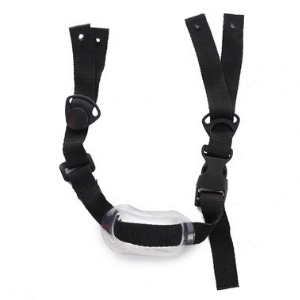
Helmet Chin Strap
Cheek Pads.
Cheek pads aren't included in all the types we pointed out earlier. You'll find them in 3/4 and also full-face helmets one of the most.
These rest versus your cheeks and are removable for much easier cleansing. They're likewise customizable permitting you to suit them to the shape of your face. This comfort feature comes particularly useful if you're sharing your helmet.
The pads are similar to the padded comfort liner as they offer some additional defense and aid keep the helmet in position.
Vents.
The ventilation system is of vital importance for safety in addition to general convenience. They keep your head cool as well as assistance vaporize sweat and also odors as long as feasible.
It's vital for 3/4 as well as full-face helmets, however, there are no policies as to what it needs to look like. Each brand name and also supplier has its own suggestion and also a version of an excellent ventilation system.
An excellent vent can open and also close permitting you to customize the airflow depending upon the weather conditions. The adjustability allows you to remain awesome throughout the summer season, and also maintain cozy during the winter season.
Security Criteria
Despite the brand and also kind, you have an interest in; your helmet needs to fulfill a minimum of one of the few motorcycle helmet security criteria. Extra so, if you reside in the U.S.A., a DOT helmet may even be law in your state.
All helmets in the UNITED STATES have to have this certification.
Various other parts of the globe have their accreditations, and there are also some third parties supplying them as well. Most of these are fairly similar in what they evaluate.
Still, they vary in the means they do the examinations, as well as in the worths a helmet has to meet or surpass for energy distribution, retention, and effect forces.
If you want or need to use a motorcycle helmet, see to it has a safety certification. Some satisfied DOT standards, while others have ECE or Snell certifications.
Don't forget the size when choosing a helmet
Whatever type you choose, see to it you get the proper size because this plays a significant role in just how secure the helmet is.
The size is directly connected to convenience. For this reason, small helmets are snugly pressing on your head and could provide you a migraine, while big ones are loud as well as simply hazardous.
And also, an unwell fit often leads to individuals quitting using a helmet altogether. So, the first thing you should do is measure your head as well as contrast the numbers with the brand name's sizing chart.
It's possibly best if you could most likely to a real store to try out the certain version. If not, ensure to try the helmet the actual minute it arrives, so you have enough time to replace it if you need to.
You ought to additionally consider your head form. To assist with this, some brand names consist of replaceable interior pads that permit you to make improvements to the total fit.
Ensure your helmet does not move when your head is still. Also, it must remain in location and also no slip-off while you ride. Lastly, keep in mind that it needs to really feel a bit tight, but with no uncomfortable pressure places.
Choose a Bluetooth intercom for your helmet
Our flagship equipment is specially developed for use with various types of helmets. Whether it is a full-face version or a half helmet, the Fodsports device can be quickly fixed and operated perfectly.
Fodsports Bluetooth motorcycle headset has a hard mic and soft mic. Suitable for all kinds of helmets. You can choose the hard mic for an open face helmet, and the soft mic for a full-face helmet.
In conclusion
All in all, the six main helmet types have their advantages. The decision depends on your unique riding needs. Consider factors such as your motorcycle, average speed, and the season you are riding, and choose the helmet that suits you best.

Motorcycle mechanic, writer. Interested in motorcycle gear for years. Like to stay up to date with the newest products and techniques of the motorcycle.
Motorcycle riding is all about the sense of freedom, adventure, and thrill of the open road. But come on—being connected when you ride isn't always an easy thing. Whether you're riding with a buddy, navigating traffic in the city, or long-distance riding, effective communication is crucial. That's where the Fodsports T5 and T6 come in, […]
If you're looking for a new motorcycle intercom system this year, Fodsports has something exciting in store. The company has launched two new Bluetooth helmet intercoms: T1 and T1 Pro. Both models bring upgraded features, sleek design, and high-definition audio quality for riders who want to stay connected, entertained, and safe on the road. But […]
Fodsports T1 and T1 Pro: The Newest Bluetooth Intercoms for Riders. Whether you’re cruising on highways, exploring rugged trails, or commuting daily, clear communication is key. Fodsports is thrilled to launch its latest Bluetooth intercoms: the T1 and T1 Pro. Built for riders who demand reliability, versatility, and crystal-clear sound, these devices redefine how you […]
Many riders who aren't so tall or ladies just starting to ride bikes need to pick out the best Motorcycles for Short Riders and Women. They gotta look for three key things: a seat that's not too high up, a bike that's not too heavy, and something that looks good enough to give them confidence. […]
Fodsports FX 60C vs FX30C Pro: What's new techs are the FX 60C bringing to us? Fodsports is a brand worth-mention for helmet communication and video recording. This brand has established itself as a key player with its innovative Bluetooth camera intercom systems. Recently, Fodsports has released a new camera intercom, the FX 60C. How […]


Fantastic article! As a new rider, I found this guide incredibly helpful. The detailed breakdown of different helmet types and their specific uses really made it easier for me to understand which helmet suits my riding style best. The safety tips and additional features to look for, such as UV protection and anti-fogging lenses, were particularly useful. Thank you for providing such comprehensive information!
"Great article! I really appreciate the clear breakdown of the different types of motorcycle helmets. It's helpful to understand how each design offers unique benefits for safety and comfort. Your explanations make it easier for riders to make informed decisions. Keep up the excellent work!"
I also like this article about different types of motorcycle helmets.